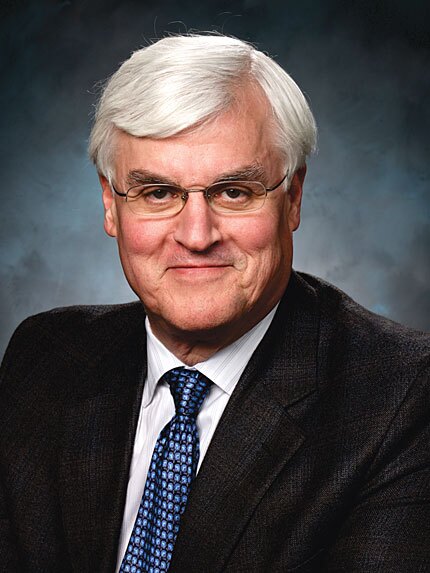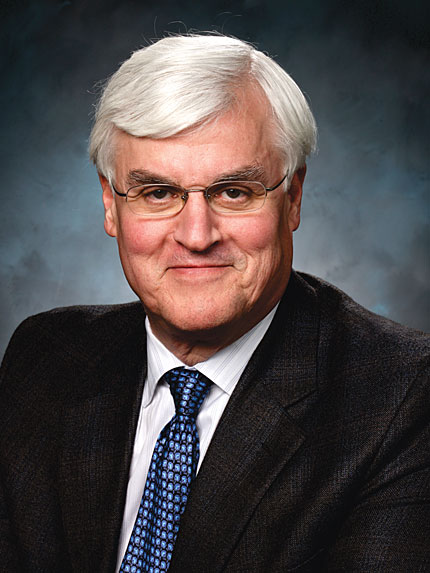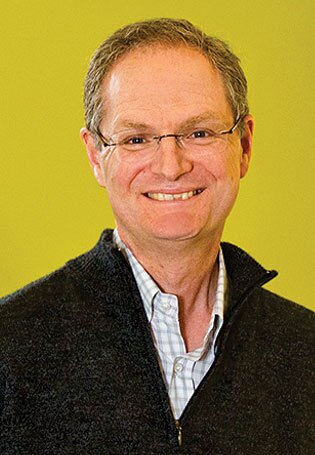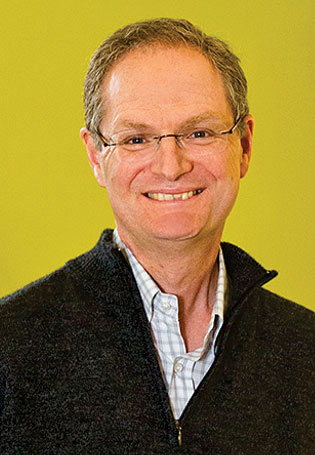West Coast national labs trying to cope with roller-coaster budget picture
DOI: 10.1063/PT.3.1972
Uncertainty is the watchword at the Department of Energy national laboratories in the San Francisco Bay area as budget cuts required by the 1 March sequestration took effect and as the outlook for fiscal year 2014 remains unknown. Several DOE lab directors interviewed during a recent visit by Physics Today say they still aren’t exactly sure how the sequestration will affect their operations, and they are bracing for continued austerity.
President Obama released his budget proposal
Based on a worst-case scenario of a $120 million cut to its $1.2 billion FY 2013 budget, the lab had planned to implement 10% salary cuts beginning in March. But Congress gave DOE’s nuclear weapons program favored treatment in the continuing resolution it passed last month, with the program getting an additional $363 million above the FY 2012 spending level. That will cushion the impact of the sequestration on LLNL, and Albright has decided to delay any pay cuts until the budget picture becomes clearer. He says there’s a good chance that budget growth could continue for his and the other weapons labs, given that at least five different warheads are or soon will be undergoing refurbishment. “The reality is that the nuclear weapons complex is being asked to do more work over the next two decades than we’ve been asked to do since the 1980s,” Albright says.
And just as the Obama administration agreed to increase spending on stockpile stewardship to ensure Senate ratification of the New START treaty in 2010 (see Physics Today, July 2010, page 24
No new starts
At Lawrence Berkeley National Laboratory (LBNL), immediate impacts to the workforce will be limited, says lab director Paul Alivisatos. But it’s likely that an American Recovery and Reinvestment Act–funded program to develop a heavy-ion-accelerator driver for inertial fusion energy will be ended, with some small job losses, since that funding has run out, he says. DOE’s Office of Science has sent the word to expect no new research projects as a result of the sequestration. “The consequence of no new starts for science is pretty much the worst scenario for science that I can think of,” Alivisatos says. “The notion that you would take an 18-month or two-year period and say, ‘Well, everything’s frozen,’ is really a bad way to do things.”
The new project hiatus will disproportionately harm early-career scientists who are in their first jobs. Alivisatos cites the case of one DOE early-career grant awardee who is now in the fourth year of her five-year grant. “Normally, a discussion would be started about how a new program could be started around this new person who has been very successful in her early-career period. Normally, you would be trying to find some funding to continue to support that person. Now they’re in a position of no new starts. Maybe something will work out there, but it will be a lot harder.”
Officials at LBNL had been hoping to build a new superconducting free-electron laser facility, the Next Generation Light Source, to complement SLAC’s Linac Coherent Light Source (LCLS). But although DOE agrees the project is needed, the bleak budget outlook means its start will be delayed. Alivisatos notes that the European XFEL will debut this year with capabilities that are in some ways superior to those of the LCLS. “If we don’t build the next system, we’ll potentially fall behind in a very important field,” he says. “Light sources support fields of science and materials that tie in with economic competitiveness.”
The Materials Project at LBNL boasts the capability to rapidly calculate fundamental properties of tens of thousands of materials and screen the materials, for example, to find promising new candidates for battery cathodes and photovoltaics. More than 3000 users have accessed the computational assets in the few months the project has been up and running. Now, with budget cuts, Alivisatos laments, “the computers aren’t going to get updated, and that doesn’t make sense. We’re in a moment when we could be building on the successes we’ve had and instead we’re pulling back.”
Optimism at SLAC
With two-thirds of SLAC’s budget now coming from DOE’s Basic Energy Sciences (BES) program, SLAC director Chi-Chang Kao expects that his facility will stay in relatively good shape. He says that based on what former Office of Science director William Brinkman—who resigned last month—told lab directors recently, funding for BES programs is expected to stay even with last year, despite the sequestration. That’s a considerable improvement over the 5% across-the-board cut the lab was expecting. Prodded in part by congressional appropriators, BES has in recent years “aggressively cut research projects that are not so competitive,” Kao says, and that policy has permitted new ideas to be funded even with flat budgets.
Cosmology has become a growth area for SLAC, the growth fueled in part by the presence of the Kavli Institute for Particle Astrophysics and Cosmology on the lab’s campus. “SLAC is positioned extremely well because of the foresight of people like [Fred] Kavli 10 years ago,” says Kao. Researchers from the institute were leaders in SLAC’s construction and assembly of the main instrument for the Fermi Gamma-Ray Space Telescope, launched in 2008 (see the article by David Thompson, Seth Digel, and Judith Racusin, Physics Today, November 2012, page 39
A SLAC team leads a project to build the digital camera for the Large Synoptic Survey Telescope (LSST), an instrument that will scan the entire visible southern sky every week and provide the widest, fastest, and deepest view of the night sky ever observed. “What we see is telescope and satellite projects becoming bigger,” Kao says. “And as they become bigger, DOE labs become more important because universities don’t have the depth of engineering staff or the project management experience to pull together the team of people and deliver the telescope or satellite within time and budget.” He notes the common threads between cosmology and x-ray science: detectors, data acquisition, and analysis. All are historic capabilities of SLAC.
But SLAC isn’t expecting this year’s sequestration to be a one-time event followed by a return to normal budgets. “We are assuming that what we are going to get now will become the new baseline,” Kao says. “We’re hoping things will go up from that new baseline.” Some of his optimism is due to Brinkman’s statement during recent congressional testimony that SLAC’s $400 million LCLS-II is the highest priority new construction project within the Office of Science. That facility would more than double the capacity and extend the energy range of the LCLS. Kao believes the LCLS-II will draw more investment from BES in the form of new instruments and more staff to support a greater number of users. “The only thing that is stopping us from starting this now is that it is a new construction project.” Uncertainty over construction approval also hangs over the LSST. “If in 2014 we have a budget, we can start construction,” Kao says hopefully.
Shutting down labs?
Despite the budget pressures and declining number of warheads, Albright insists there is a continued need for the two nuclear weapons design laboratories, LLNL and Los Alamos National Laboratory. “I come from outside the nuclear weapons community, but now I’ve been exposed to it, and I will tell you that the approach that Los Alamos takes is very different to the approach that Livermore takes. In terms of the modeling and simulations we do, the way we reach judgments about the weapons and their state of health is just different. The way we use data, the way we weight the data, is different. We do look at each other’s weapons. It leads to a very healthy interchange.”
Albright also expects that LLNL will increase the R&D work it performs for the Department of Homeland Security as that agency’s science and technology budget rebounds from two years ago, when its budget was cut by nearly half.

Penrose Albright
LLNL


Paul Alivisatos
LBNL


Chi-Chang Kao
SLAC

More about the Authors
David Kramer. dkramer@aip.org
